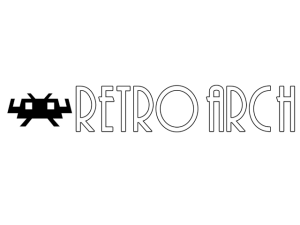More actions
No edit summary |
No edit summary |
||
| Line 34: | Line 34: | ||
Think of libretro as an interface for emulator and game ports. You can make a libretro port once and expect the same code to run on all the platforms that RetroArch supports. It's designed with simplicity and ease of use in mind so that the porter can worry about the port at hand instead of having to wrestle with an obfuscatory API. | Think of libretro as an interface for emulator and game ports. You can make a libretro port once and expect the same code to run on all the platforms that RetroArch supports. It's designed with simplicity and ease of use in mind so that the porter can worry about the port at hand instead of having to wrestle with an obfuscatory API. | ||
===Cores lists=== | ===Cores lists=== | ||
Supported cores: | Supported cores: | ||
Revision as of 17:28, 27 November 2022
| RetroArch | |
|---|---|
 | |
| General | |
| Author | Libretro |
| Type | Console |
| Version | Xbox1-1.7.3 |
| License | GPL-3.0 |
| Last Updated | 2018/05/04 |
| Links | |
| Download | |
| Website | |
| Source | |
RetroArch is a modular multi-system emulator system that is designed to be fast, lightweight and portable. It has features few other emulator frontends have, such as real-time rewinding and game-aware shading.
Features
- Real-time rewinding.
- Switching between emulator cores seamlessly, and ability to install new libretro cores.'
Installation
Copy the entire folder RetroArch-XBox1 to your harddrive.
ROMs go into the roms directory, or some subdirectory in the RetroArch-XB1 directory.
User guide
About libretro
Libretro is the API that RetroArch uses. It makes it easy to port games and emulators to a single core backend, such as RetroArch.
For the user, this means - more ports to play with, more crossplatform portability, less worrying about developers having to reinvent the wheel writing boilerplate UI/port code - so that they can get busy with writing the emulator/porting the emulator/game.
For each emulator core, RetroArch makes use of a library API that we call libretro.
Think of libretro as an interface for emulator and game ports. You can make a libretro port once and expect the same code to run on all the platforms that RetroArch supports. It's designed with simplicity and ease of use in mind so that the porter can worry about the port at hand instead of having to wrestle with an obfuscatory API.
Cores lists
Supported cores:
- 2048 (puzzle game).
- 4do (3DO Emulator).
- FCEUmm (NES Emulator).
- Gambatte (GB/GBC).
- Genesis Plus GX.
- Handy (Atari Lynx).
- Mednafen NGP (Neo Geo Pocket).
- Mednafen VB (virtual boy).
- Mednafen WonderSwan.
- Nestopia (NES emulator).
- NXEngine (Cave Story).
- O2EM (Odyssey 2).
- PocketCDG (MP3 karaoke music player).
- PrBoom (Doom).
- ProSystem (Atari 7800).
- QuickNES (NES Emulator).
- Snes9x 2010 (SNES Emulator).
- Stella (Atari 2600).
- TGB Dual (Dual GBC emulator).
- VBA Next (GBA).
- Vecx (Vectrex).
- Virtual Jaguar (Atari Jaguar).
3 restored cores:
- FBA (CPS1, CPS2, NeoGeo).
Cores missing:
- PCE Fast.
- TYRQuake.
Notes:
- VBA Next doesn't run at fullspeed on Wii (VBA Next is a RetroConsole Level 2 emulator port).
- The biggest Neo-Geo ROMs that can be loaded are around 23+MB in size, such as Real Bout Fatal Fury 1 and King of Fighters '96.
Extensions supported by each core
- Prboom - wad.
- Tyrquake - pak.
- SNES9x Next - smc|fig|sfc|gd3|gd7|dx2|bsx|swc.
- Genesis Plus GX - md|smd|bin|gen|bin|sms|gg|sg|cue.
- NXEngine/Cave Story - exe.
- VBA Next - gba.
- FCEUmm - nes|unif.
- NEStopia - nes|fds.
- Gambatte - gb|gbc|dmg.
- Final Burn Alpha - zip.
- Mednafen PCE - pce|cue.
- Mednafen Wonderswan - ws|wsc.
- Mednafen NGP - ngp.
- Mednafen VB - vb.
How to use
On first startup, RetroArch will select one of the dozen or so emulator/game cores. The name of the core currently loaded will be shown at the top side of the screen.
You can now select a data file (ie. a game executable and/or a ROM) that this core supports and load it in the Filebrowser.
To select a different core - go to Core in the Main Menu. Select a core and then press A to switch to the emulator/game core.
Selecting a ZIP file will temporarily unzip that file to the harddrive. The temporary file will be deleted as soon as the game gets unloaded and/or when you quit RetroArch.
Troubleshooting
If you find that RetroArch no longer works for whatever reason, try removing retroarch.cfg from the 'Retroarch-XB1' folder, then start up again.
Controls
In gmae:
Right-Stick Down - Fast-forwards the game
Right-Stick Up - Rewinds the game in real-time (must be enabled in the Settings screen, comes at a slight performance decrease)
Right-Stick Left+R - Decrease save state slot
Right-Stick Right+R - Increase save state slot
Right-Stick Up+R - Load selected save state slot
Right-Stick Down+R - Save selected save state slot
Right-Stick Thumb+Left-Stick Thumb - Go back to Menu
File browser:
L/R - Go to previous/next drive mapping
White/Black - Scroll list up/down
Credits
- Mudlord for his Waterpaint/Noise shaders.
- Hyllian for the xBR shader.
- Opium2k for the nice manual shaders (bundled with PS3 release).
- Deank for assistance with RetroArch Salamander on CFW PS3s and Multiman interoperability.
- FBA devs for adopting the libretro port.
- Ekeeke for help with the Genesis Plus GX port.
- ToadKing for having done a lot of work on RetroArch Wii.
- Freakdave for helping out with the Xbox 1 port.
External links
- Official website - https://www.retroarch.com/
- GitHub - https://github.com/libretro/RetroArch
